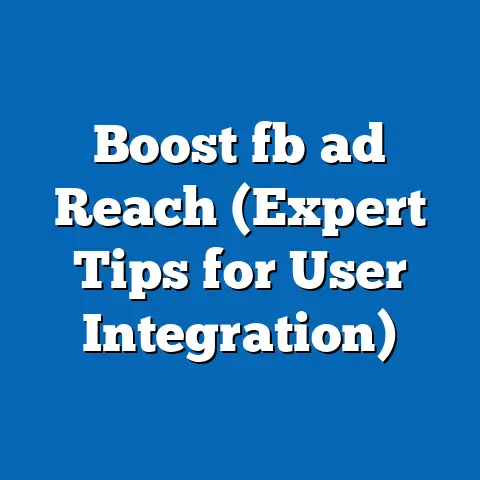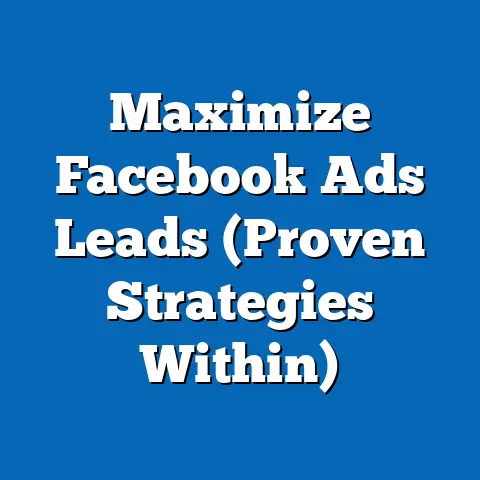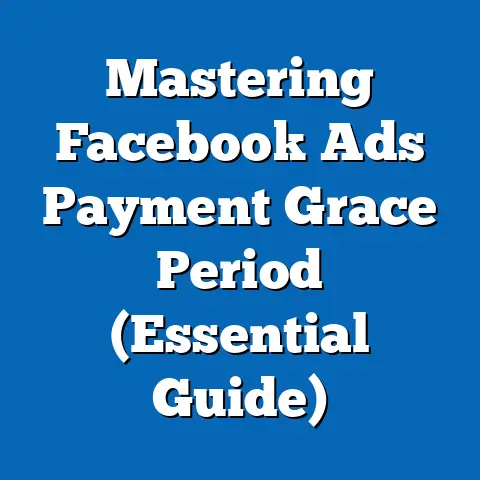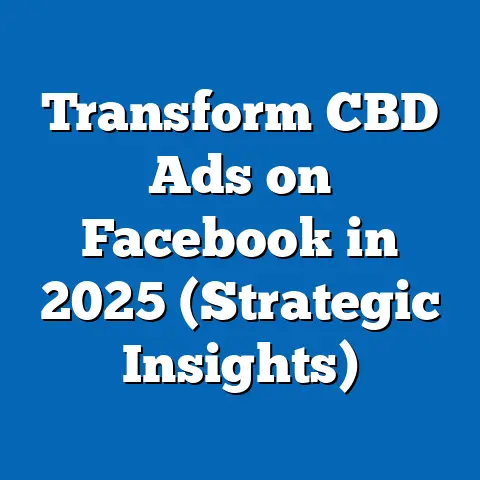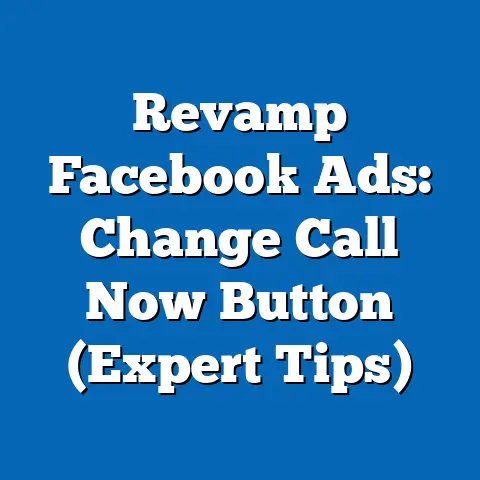Create Facebook Ads Without Posting (Strategic Guide)
As a digital marketing specialist with years of experience crafting successful Facebook ad campaigns, I’ve learned that strategy is paramount. It’s not enough to just throw up an ad and hope for the best. Especially in a niche as passionate and discerning as the pet industry, you need a thoughtful, well-planned approach. That’s why I’m excited to share this strategic guide on creating Facebook ads without posting directly to your page. This approach allows for meticulous planning, targeted audience engagement, and optimized performance – all crucial for success in the competitive world of pet-friendly businesses.
Think of it like this: you wouldn’t bring a new pet home without carefully preparing their space, researching their needs, and stocking up on the right supplies, right? The same principle applies to your Facebook ads. You need to lay the groundwork, understand your audience, and craft a message that resonates before you even think about hitting “publish.”
The beauty of creating ads without posting is that it allows you to fine-tune your message, test different variations, and schedule your campaigns for optimal performance – all without cluttering your Facebook page with promotional content. This strategic approach ensures that your ads are seen by the right people, at the right time, with the right message.
So, whether you’re a seasoned marketer or just starting out, this guide will provide you with the knowledge and tools you need to create Facebook ads that drive results for your pet-friendly business. Get ready to unleash the power of targeted advertising and connect with a passionate audience of pet owners who are eager to discover what you have to offer.
Here’s a sneak peek at what we’ll cover:
- Understanding Facebook Ads: A deep dive into the different ad formats, audience targeting options, and bidding strategies.
- The Importance of Pet-Friendly Choices: Why focusing on pet-friendly values is crucial for success in the pet industry.
- Crafting Your Facebook Ad Strategy: A step-by-step guide to creating a winning ad strategy, including identifying your target audience, conducting market research, and setting clear goals.
- Designing Pet-Friendly Ads: Tips on creating visually appealing and emotionally resonant ads that speak to pet owners.
- Utilizing Facebook’s Advanced Tools and Features: How to leverage Audience Insights, Custom Audiences, and Lookalike Audiences to refine your targeting.
- Measuring Success and Adjusting Your Strategy: How to track key metrics, analyze ad performance, and make necessary adjustments to optimize your campaigns.
Let’s dive in and unlock the secrets to creating successful Facebook ads for your pet-friendly business!
Section 1: Understanding Facebook Ads
Facebook Ads have become a cornerstone of modern marketing, and for good reason. With billions of active users, the platform offers an unparalleled opportunity to reach a vast and diverse audience. But simply creating an ad and hoping it resonates is a recipe for wasted budget and frustration. To truly succeed with Facebook Ads, you need a solid understanding of the platform’s advertising ecosystem.
What are Facebook Ads?
Facebook Ads are paid messages that businesses use to reach their target audience on Facebook and its associated platforms, including Instagram, Messenger, and the Audience Network. These ads can take various forms, each designed to capture attention and drive specific actions:
- Image Ads: Single image ads are the simplest format, featuring a compelling visual and concise text. I’ve found these to be effective for showcasing a particular product or service in a visually appealing way.
- Video Ads: Video ads are highly engaging, allowing you to tell a story, demonstrate a product, or share valuable information. I’ve personally seen video ads significantly outperform image ads in terms of engagement and conversions.
- Carousel Ads: Carousel ads display multiple images or videos in a scrolling format, allowing you to showcase a range of products, highlight different features, or tell a multi-part story. I’ve used these effectively to showcase different flavors of pet food or different services offered by a pet grooming salon.
- Slideshow Ads: Slideshow ads are a cost-effective alternative to video ads, using a series of still images to create a visually engaging experience.
- Collection Ads: Collection ads are designed for e-commerce businesses, allowing you to showcase a catalog of products in a visually appealing and easily browsable format.
The Facebook Advertising Ecosystem
The Facebook advertising ecosystem is a complex but powerful system that allows you to target your ads to specific demographics, interests, behaviors, and more. Here are some key components to understand:
- Audience Targeting: Facebook’s targeting options are incredibly granular, allowing you to reach people based on their age, gender, location, interests, behaviors, and even their connections to other Facebook pages. For a pet-friendly business, this means you can target people who are interested in specific breeds of dogs, who have recently purchased pet supplies, or who are members of pet-related Facebook groups.
- Bidding Strategies: Facebook uses an auction system to determine which ads are shown to users. You can choose from a variety of bidding strategies, including cost per click (CPC), cost per impression (CPM), and cost per action (CPA), depending on your campaign goals.
- Ad Placement: You can choose where your ads are displayed, including the Facebook News Feed, Instagram Feed, Messenger, and the Audience Network (a network of third-party websites and apps).
- Metrics for Success: Tracking the right metrics is essential for measuring the success of your Facebook ad campaigns. Key metrics include reach, impressions, engagement, click-through rate (CTR), conversion rate, and return on ad spend (ROAS).
Ads Without Posting: A Strategic Advantage
Now, let’s get to the core of this guide: creating ads without posting directly to your Facebook page. This approach offers several key advantages:
- Clean and Consistent Page: Your Facebook page remains focused on organic content and community engagement, without being cluttered with promotional ads.
- Targeted Advertising: You can create highly targeted ads that are seen only by your desired audience, without alienating your existing followers who may not be interested in every promotion.
- Flexibility and Control: You have complete control over the timing and frequency of your ads, allowing you to schedule them for optimal performance.
- A/B Testing: You can easily test different ad variations without posting them publicly, allowing you to optimize your campaigns for maximum impact.
I remember one campaign I ran for a local pet store. They were constantly posting about sales and promotions on their Facebook page, which was driving down engagement and annoying their followers. By switching to an ads-without-posting strategy, we were able to create targeted ads that reached new customers without spamming their existing audience. The result was a significant increase in sales and a more engaged Facebook community.
Examples for Pet Products and Services
To illustrate the power of Facebook Ads, let’s consider a few examples pertinent to pet products and services:
- Pet Food: A pet food brand could create carousel ads showcasing different flavors and ingredients, targeting pet owners who are interested in healthy and nutritious food options.
- Pet Grooming: A pet grooming salon could create video ads demonstrating their services and highlighting the benefits of professional grooming for pets.
- Pet Sitting: A pet sitting service could create image ads featuring happy pets being cared for in a loving environment, targeting pet owners who are planning a vacation or business trip.
Key Takeaways:
- Facebook Ads are a powerful tool for reaching a vast and diverse audience.
- Understanding the Facebook advertising ecosystem is essential for success.
- Creating ads without posting offers several key advantages, including a clean page, targeted advertising, and flexibility.
Next Steps:
- Familiarize yourself with the different Facebook ad formats and their best use cases.
- Explore Facebook’s targeting options to understand how you can reach your ideal customer.
- Start thinking about how you can create ads without posting to your Facebook page.
Section 2: The Importance of Pet-Friendly Choices
In today’s world, “pet-friendly” isn’t just a buzzword – it’s a movement. It reflects a deep-seated shift in how we view our relationships with animals. Pets are no longer just companions; they’re family members. And as family members, their well-being is paramount. This has a profound impact on consumer behavior, particularly in the pet industry. Understanding and embracing pet-friendly choices in your advertising is not just ethically sound; it’s also a smart business strategy.
What Does “Pet-Friendly” Mean in Advertising?
Pet-friendly advertising goes beyond simply featuring pets in your ads. It encompasses a holistic approach that considers the following:
- Ethical Representation: Ensuring that animals are treated with respect and dignity in your ads. This means avoiding imagery or messaging that exploits, endangers, or objectifies pets.
- Accurate Information: Providing accurate and truthful information about your products or services, avoiding misleading claims or exaggerations.
- Safety and Well-being: Promoting products and services that prioritize the safety and well-being of pets. This includes avoiding products that could be harmful or dangerous to animals.
- Inclusivity: Recognizing and celebrating the diversity of pet ownership, including different types of pets, breeds, and pet owner demographics.
- Responsible Pet Ownership: Encouraging responsible pet ownership practices, such as adoption, spaying/neutering, and proper training.
The Growing Trend of Pet Ownership
The pet industry is booming, driven by the increasing humanization of pets and the growing recognition of the emotional and physical benefits of pet ownership.
- Statistics on Pet Ownership: According to the American Pet Products Association (APPA), nearly 70% of U.S. households own a pet, a figure that has been steadily increasing over the past few decades.
- Spending Trends: Pet owners are spending more than ever on their furry friends, with total pet industry expenditures reaching over $100 billion annually. This includes spending on food, supplies, veterinary care, grooming, and other services.
This growth presents a significant opportunity for businesses in the pet niche. However, it also means that consumers are becoming more discerning and demanding. They’re looking for products and services that are not only high-quality but also aligned with their values.
How Pet-Friendly Ads Enhance Brand Loyalty and Customer Engagement
Pet-friendly ads can significantly enhance brand loyalty and customer engagement in the pet niche. Here’s why:
Several pet brands have successfully utilized engaging ad strategies focused on pet-friendly themes. Here are a few examples:
- Wellness Pet Food: Wellness Pet Food is known for its commitment to natural and wholesome ingredients. Their ads often feature happy and healthy pets enjoying their food, highlighting the benefits of their products for pet health and well-being.
- BarkBox: BarkBox is a subscription box service for dogs. Their ads are playful and humorous, featuring dogs enjoying their monthly box of toys and treats. They also partner with animal shelters and rescue organizations, donating a portion of their proceeds to support animal welfare.
- Chewy: Chewy is an online retailer of pet food and supplies. Their customer service is legendary, and they often feature heartwarming stories of pet owners and their beloved animals in their ads.
Key Takeaways:
- Pet-friendly advertising is a holistic approach that considers the ethical representation, safety, and well-being of animals.
- The pet industry is booming, driven by the increasing humanization of pets.
- Pet-friendly ads can enhance brand loyalty, customer engagement, and brand image.
Next Steps:
- Reflect on your current advertising strategies and identify areas where you can incorporate more pet-friendly values.
- Research successful pet brands and analyze their advertising campaigns to gain inspiration.
- Start brainstorming creative ideas for pet-friendly ads that will resonate with your target audience.
Section 3: Crafting Your Facebook Ad Strategy
Creating a successful Facebook ad campaign, especially one that resonates with the pet-loving community, requires more than just a catchy slogan and a cute picture. It demands a well-defined strategy that aligns with your business goals and speaks directly to your target audience. This section will guide you through the essential steps of crafting a winning Facebook ad strategy without relying on direct page posts.
Step 1: Identify Your Target Audience
The foundation of any successful ad campaign is a clear understanding of your target audience. Who are you trying to reach? What are their needs, interests, and pain points? For pet-friendly businesses, this might include:
- Pet Owners: This is the broadest category, encompassing anyone who owns a pet. You can further segment this group based on the type of pet (dog, cat, bird, etc.), breed, age, and other factors.
- Pet Lovers: This group includes people who don’t necessarily own a pet but are passionate about animals and may be considering getting one in the future.
- Specific Interest Groups: This could include people who are interested in specific breeds of dogs, who are members of pet-related Facebook groups, or who follow pet influencers on Instagram.
I’ve found that creating detailed buyer personas can be incredibly helpful in understanding your target audience. A buyer persona is a fictional representation of your ideal customer, based on research and data about your existing customers. This can help you to identify their motivations, goals, and challenges, which will inform your ad messaging and targeting.
Step 2: Conduct Market Research
Once you’ve identified your target audience, it’s time to conduct market research to gain a deeper understanding of their preferences and behaviors. This can involve:
- Analyzing Competitor Ads: See what your competitors are doing on Facebook. What types of ads are they running? Who are they targeting? What kind of engagement are they getting?
- Surveying Your Existing Customers: Ask your customers about their needs, preferences, and pain points. What are they looking for in a pet product or service? What are their biggest challenges as pet owners?
- Using Facebook Audience Insights: This tool provides valuable data about the demographics, interests, and behaviors of people on Facebook. You can use it to refine your targeting and identify new audience segments.
- Monitoring Social Media: Keep an eye on what people are saying about your brand and your competitors on social media. This can provide valuable insights into customer sentiment and emerging trends.
Step 3: Set Clear Goals for Your Ad Campaign
What do you want to achieve with your Facebook ad campaign? Are you trying to:
- Increase Brand Awareness: Reach a wider audience and build recognition for your brand.
- Generate Leads: Collect contact information from potential customers.
- Drive Sales: Encourage people to purchase your products or services.
- Increase Website Traffic: Drive more visitors to your website.
- Promote an Event: Get people to attend a pet-related event or workshop.
Your goals will determine the type of ad you create, the targeting options you use, and the metrics you track. It’s essential to set SMART goals – Specific, Measurable, Achievable, Relevant, and Time-bound.
Step 4: Create Compelling Ad Content
This is where the magic happens. Your ad content is what will ultimately capture the attention of your target audience and persuade them to take action. Here are some tips for creating compelling ad content that resonates with pet owners:
- Use High-Quality Visuals: Choose images or videos that are visually appealing and relevant to your target audience. Feature happy and healthy pets, and showcase your products or services in a positive light.
- Write Catchy Headlines: Your headline is the first thing people will see, so make it count. Use strong verbs, highlight key benefits, and create a sense of urgency.
- Craft Engaging Copy: Tell a story, share a testimonial, or provide valuable information. Focus on the benefits of your products or services for pets and their owners.
- Include a Clear Call to Action: Tell people what you want them to do. Use clear and concise language, such as “Shop Now,” “Learn More,” or “Get a Free Quote.”
A/B Testing for Ad Content
A/B testing is the process of comparing two versions of an ad to see which one performs better. This is essential for optimizing your campaigns and maximizing your ROI. You can A/B test different headlines, images, copy, and calls to action.
The key is to test only one variable at a time, so you can accurately determine which element is driving the difference in performance. For example, you could test two different headlines with the same image and copy.
Using Facebook’s Ad Manager
Facebook’s Ad Manager is a powerful tool that allows you to create, manage, and track your ad campaigns. It provides a wealth of data and insights that can help you to optimize your campaigns for maximum performance.
With Ad Manager, you can:
- Create and schedule ads
- Target your audience
- Set your budget
- Track your results
- A/B test different ad variations
Key Takeaways:
- A well-defined ad strategy is essential for success on Facebook.
- Identify your target audience, conduct market research, and set clear goals.
- Create compelling ad content that resonates with pet owners.
- Use A/B testing to optimize your campaigns.
- Leverage Facebook’s Ad Manager to create, manage, and track your ads.
Next Steps:
Visual Elements: Choosing Pet-Centric Images, Colors, and Themes
The visual elements of your ad are the first thing people will notice, so it’s crucial to make a strong impression. Here are some tips for choosing pet-centric images, colors, and themes:
- Feature Happy and Healthy Pets: Use images or videos of pets that are clearly well-cared for and enjoying themselves. Avoid imagery that depicts animals in distress, neglect, or exploitation.
- Showcase a Variety of Pets: Recognize and celebrate the diversity of pet ownership by featuring different types of pets, breeds, and ages.
- Use Natural Lighting and Settings: Opt for natural lighting and outdoor settings whenever possible. This creates a more authentic and relatable feel.
- Choose Colors that Evoke Positive Emotions: Colors can have a powerful impact on emotions. Use colors that evoke feelings of warmth, happiness, and trust, such as blues, greens, and yellows.
- Incorporate Pet-Related Themes: Use themes that are relevant to pet ownership, such as playtime, grooming, or healthy eating.
Inclusive Messaging: Resonating with Diverse Pet Ownership
It’s important to remember that pet ownership is not a monolithic experience. Different people have different types of pets, different breeds, and different lifestyles. Your ads should be inclusive and resonate with this diversity.
- Avoid Stereotypes: Be mindful of stereotypes about certain breeds or types of pets. For example, don’t assume that all pit bulls are aggressive or that all cats are aloof.
- Showcase Different Family Structures: Feature families of all shapes and sizes, including single-person households, LGBTQ+ couples, and multi-generational families.
- Use Inclusive Language: Avoid language that excludes certain groups of pet owners. For example, instead of saying “dog owners,” say “pet owners.”
- Consider Accessibility: Make sure your ads are accessible to people with disabilities. This includes providing alt text for images and captions for videos.
Writing Ad Copy that Highlights the Benefits for Pets
When writing your ad copy, focus on the benefits of your products or services for pets, not just for their owners.
- Focus on Safety, Health, and Enjoyment: Highlight how your products or services can improve the safety, health, and enjoyment of pets.
- Use Specific and Measurable Language: Instead of saying “Our food is healthy for your pet,” say “Our food is formulated with high-quality ingredients to support your pet’s immune system and promote a healthy coat.”
- Address Common Pain Points: Identify the biggest challenges that pet owners face and explain how your products or services can help them overcome those challenges.
- Use Testimonials and Social Proof: Share testimonials from satisfied customers and highlight positive reviews to build trust and credibility.
Creative Approaches: Storytelling and Emotional Appeal
Storytelling and emotional appeal can be powerful tools for connecting with your audience on a personal level.
- Tell a Story: Share a heartwarming story about a pet who has benefited from your products or services.
- Use Humor: Humor can be a great way to capture attention and make your ads more memorable.
- Evoke Emotion: Tap into the emotions that pet owners feel for their animals, such as love, compassion, and protectiveness.
- Create a Sense of Community: Foster a sense of community among pet owners by sharing stories, tips, and advice.
I remember seeing an ad for a pet insurance company that told the story of a dog who had been diagnosed with cancer. The ad showed the dog undergoing treatment and eventually recovering, thanks to the help of the pet insurance policy. The ad was incredibly emotional and resonated deeply with pet owners who had experienced similar situations.
Key Takeaways:
- Design ads that reflect pet-friendly values and capture the hearts of your target audience.
- Use pet-centric images, colors, and themes that evoke positive emotions.
- Craft inclusive messaging that resonates with diverse pet ownership.
- Write ad copy that highlights the benefits of your products or services for pets.
- Use storytelling and emotional appeal to connect with your audience on a personal level.
Next Steps:
- Brainstorm creative ideas for pet-friendly ads that will resonate with your target audience.
- Gather high-quality images and videos of happy and healthy pets.
- Write compelling ad copy that highlights the benefits of your products or services for pets.
- Incorporate storytelling and emotional appeal into your ads.
Section 5: Utilizing Facebook’s Advanced Tools and Features
Facebook isn’t just a platform for sharing cat videos and political opinions. It’s also a sophisticated advertising platform with a suite of advanced tools and features designed to help you reach the right people with the right message. For pet-friendly businesses, leveraging these tools can be the key to unlocking significant growth and engagement. This section will explore how to utilize Facebook’s advanced tools and features to refine your target audience and optimize your ad campaigns.
Audience Insights: Understanding Your Target Audience
Facebook Audience Insights provides valuable data about the demographics, interests, and behaviors of people on Facebook. This tool can help you to:
- Identify Your Ideal Customer: Discover the age, gender, location, education level, and relationship status of people who are interested in your products or services.
- Uncover Their Interests: Learn about the pages they like, the topics they discuss, and the activities they engage in.
- Understand Their Behaviors: See what types of devices they use, how often they shop online, and what types of ads they respond to.
To use Audience Insights, simply go to Facebook Ads Manager and select “Audience Insights” from the menu. You can then choose to analyze everyone on Facebook, people connected to your page, or a custom audience that you’ve created.
For a pet-friendly business, you could use Audience Insights to analyze people who are interested in specific breeds of dogs, who are members of pet-related Facebook groups, or who have recently purchased pet supplies. This information can help you to refine your targeting and create more effective ads.
Custom Audiences: Targeting Your Existing Customers
Custom Audiences allow you to target your ads to people who have already interacted with your business, either online or offline. This can include:
- Website Visitors: Target people who have visited your website, viewed specific pages, or added items to their shopping cart.
- Email List Subscribers: Upload your email list to Facebook and target your subscribers with relevant ads.
- Customer List: Upload a list of your existing customers and target them with special offers or loyalty rewards.
- Mobile App Users: Target people who have downloaded and used your mobile app.
- Offline Activity: Target people who have interacted with your business in person, such as by visiting your store or attending an event.
Custom Audiences are a powerful way to re-engage with existing customers and drive repeat business. For a pet-friendly business, you could use Custom Audiences to target people who have purchased pet food from your website, who have subscribed to your email list, or who have visited your pet grooming salon.
Lookalike Audiences: Expanding Your Reach
Lookalike Audiences allow you to reach new people who are similar to your existing customers. Facebook uses its algorithms to identify people who share the same demographics, interests, and behaviors as your Custom Audiences.
This is a great way to expand your reach and find new customers who are likely to be interested in your products or services. For a pet-friendly business, you could create a Lookalike Audience based on your existing customers or your website visitors.
Retargeting Ads: Bringing Back Lost Customers
Retargeting ads are ads that are shown to people who have previously interacted with your business but haven’t yet made a purchase or taken the desired action. This is a powerful way to remind people about your products or services and encourage them to convert.
For a pet-friendly business, you could use retargeting ads to target people who have added items to their shopping cart but haven’t completed the purchase, who have viewed specific product pages, or who have visited your website but haven’t subscribed to your email list.
Pixel Tracking: Measuring Website Conversions
The Facebook Pixel is a small piece of code that you can install on your website to track website conversions and measure the effectiveness of your ad campaigns.
With Pixel tracking, you can:
- Track Website Visitors: See who is visiting your website and what pages they are viewing.
- Measure Conversions: Track when people make a purchase, subscribe to your email list, or take other desired actions.
- Optimize Your Ads: Use the data to optimize your ads for maximum performance.
For a pet-friendly business, you could use Pixel tracking to track purchases of pet food, subscriptions to your email list, or appointments for pet grooming services.
Key Takeaways:
- Facebook offers a suite of advanced tools and features designed to help you reach the right people with the right message.
- Use Audience Insights to understand your target audience and refine your targeting.
- Leverage Custom Audiences to target your existing customers and drive repeat business.
- Create Lookalike Audiences to expand your reach and find new customers.
- Use retargeting ads to bring back lost customers and encourage them to convert.
- Install the Facebook Pixel on your website to track website conversions and measure the effectiveness of your ad campaigns.
Next Steps:
- Explore Facebook Audience Insights to learn more about your target audience.
- Create Custom Audiences based on your existing customers, website visitors, and email list subscribers.
- Create Lookalike Audiences to expand your reach and find new customers.
- Set up retargeting ads to bring back lost customers and encourage them to convert.
- Install the Facebook Pixel on your website to track website conversions and measure the effectiveness of your ad campaigns.
Section 6: Measuring Success and Adjusting Your Strategy
Creating a Facebook ad campaign is only half the battle. The other half is measuring its success and making adjustments to optimize its performance. Without proper tracking and analysis, you’re essentially flying blind, wasting your budget and missing out on valuable opportunities. This section will guide you through the process of measuring the effectiveness of your pre-created ads and making necessary adjustments to enhance future campaigns.
Key Metrics to Track
Several key metrics can help you gauge the success of your Facebook ad campaigns. Here are some of the most important ones to track:
- Reach: The number of unique people who saw your ad.
- Impressions: The number of times your ad was displayed.
- Engagement: The number of interactions your ad received, such as likes, comments, shares, and clicks.
- Click-Through Rate (CTR): The percentage of people who saw your ad and clicked on it.
- Conversion Rate: The percentage of people who clicked on your ad and completed a desired action, such as making a purchase or subscribing to your email list.
- Cost Per Click (CPC): The average cost you paid for each click on your ad.
- Cost Per Conversion (CPC): The average cost you paid for each conversion.
- Return on Ad Spend (ROAS): The amount of revenue you generated for every dollar you spent on advertising.
Why These Metrics Matter for Pet-Related Businesses
These metrics are particularly important for pet-related businesses because they can help you to:
- Understand Your Audience: By tracking reach and engagement, you can gain insights into the demographics, interests, and behaviors of people who are responding to your ads.
- Optimize Your Targeting: By analyzing CTR and conversion rate, you can identify which targeting options are most effective at reaching your ideal customer.
- Improve Your Ad Content: By testing different headlines, images, and copy, you can create more compelling ads that resonate with pet owners.
- Maximize Your ROI: By tracking CPC, CPA, and ROAS, you can ensure that you’re getting the most bang for your buck.
Analyzing Ad Performance
To analyze your ad performance, go to Facebook Ads Manager and select the campaign, ad set, or ad that you want to analyze. You can then view a variety of reports that provide detailed data on your key metrics.
When analyzing your ad performance, look for trends and patterns. Are certain ads performing better than others? Are certain targeting options driving more conversions? Are certain demographics more responsive to your ads?
Making Necessary Adjustments
Based on your analysis, you can make several adjustments to optimize your ad campaigns. Here are some common adjustments to consider:
- Refine Your Targeting: If your ads are not reaching the right people, refine your targeting options to focus on your ideal customer.
- Improve Your Ad Content: If your ads are not generating enough engagement or conversions, try testing different headlines, images, and copy.
- Adjust Your Bidding Strategy: If you’re paying too much for clicks or conversions, adjust your bidding strategy to lower your costs.
- Pause Underperforming Ads: If certain ads are not performing well, pause them to avoid wasting your budget.
- Allocate More Budget to High-Performing Ads: If certain ads are performing exceptionally well, allocate more budget to them to maximize your ROI.
Common Pitfalls to Avoid
Several common pitfalls can derail even the most well-planned Facebook ad campaigns. Here are some to watch out for:
- Poor Targeting: Targeting the wrong audience is one of the biggest mistakes you can make.
- Irrelevant Ad Content: If your ad content is not relevant to your target audience, they’re unlikely to engage with it.
- Lack of A/B Testing: Without A/B testing, you’re missing out on valuable opportunities to optimize your campaigns.
- Ignoring Your Metrics: Failing to track and analyze your metrics is like driving a car without a speedometer.
- Not Adjusting Your Strategy: The Facebook advertising landscape is constantly changing. You need to be flexible and willing to adjust your strategy as needed.
Key Takeaways:
- Measuring the success of your Facebook ad campaigns is essential for optimizing their performance.
- Track key metrics such as reach, impressions, engagement, CTR, conversion rate, CPC, CPA, and ROAS.
- Analyze your ad performance to identify trends and patterns.
- Make necessary adjustments to refine your targeting, improve your ad content, and optimize your bidding strategy.
- Avoid common pitfalls such as poor targeting, irrelevant ad content, and lack of A/B testing.
Next Steps:
- Set up tracking for your key metrics in Facebook Ads Manager.
- Analyze your ad performance regularly to identify areas for improvement.
- Make necessary adjustments to optimize your campaigns.
- Stay up-to-date on the latest Facebook advertising trends and best practices.
Conclusion
We’ve covered a lot of ground in this guide, from understanding the fundamentals of Facebook Ads to leveraging advanced tools and features and measuring your success. The key takeaway is that creating effective Facebook ads, especially for pet-friendly businesses, requires a strategic, thoughtful, and data-driven approach. Simply posting ads to your page and hoping for the best is not enough.
Creating ads without posting offers a powerful way to reach your target audience without cluttering your Facebook page. This allows you to maintain a clean and consistent brand image while still driving targeted traffic and generating leads.
Remember that pet owners are a passionate and discerning group. They care deeply about the well-being of their animals, and they’re looking for products and services that reflect their values. By creating ads that are ethical, informative, and engaging, you can build trust and credibility with this valuable audience.
I’ve seen firsthand the power of a well-executed Facebook ad strategy. I’ve helped pet stores increase sales by targeting pet owners who are interested in healthy food options. I’ve helped pet grooming salons book more appointments by showcasing their services in visually appealing video ads. And I’ve helped pet sitting services generate leads by featuring happy pets being cared for in a loving environment.
These successes are not accidental. They’re the result of careful planning, diligent execution, and a commitment to continuous improvement.
So, what are you waiting for? It’s time to start planning your Facebook ad campaigns strategically, focusing on the unique elements that make your offerings appealing to pet owners.
Here’s a final call to action:
- Review this guide and identify the key takeaways that are most relevant to your business.
- Create a Facebook ad strategy that aligns with your business goals and speaks directly to your target audience.
- Design pet-friendly ads that are ethical, informative, and engaging.
- Utilize Facebook’s advanced tools and features to refine your targeting and optimize your campaigns.
- Measure your success and adjust your strategy as needed.
By following these steps, you can unlock the power of Facebook advertising and connect with a passionate audience of pet owners who are eager to discover what you have to offer. Good luck, and happy advertising!

